HLTWHS002 Follow safe practices for direct client care
|
HLTWHS002 Follow safe practices for direct client care |
ASSESSMENT OVERVIEW
This Student Assessment Booklet-I includes Task 1 for assessment of HLTWHS002 Follow safe practices for direct client care.
|
Assessment Task |
About this task |
|
Assessment Task 1: Written questions |
You must correctly answer all questions to show that you understand the knowledge required of this unit. |
|
Assessment Task 2: Project – WHS inspection |
You are complete a work health and safety inspection of an area in your workplace. |
|
Assessment Task 3: Project – WHS risk assessment |
You are to complete a WHS risk assessment. |
|
Assessment Task 4: Workplace observations |
There are three parts to this assessment: § Part A: You are to locate and discuss your workplace’s organizational policies and procedures with your assessor. § Part B: You are to demonstrate the application of emergency response policies and procedures. § Part C: You are to demonstrate the application of infection control policies and procedures by cleaning up a ‘blood spill’. |
Supporting resources
You may like to look at the following websites, books, and documents for more information about the topics related to this unit:
- Arnott, G 2011, The Disability Support Worker, Pearson Australia, Frenchs Forest, NSW.
- Croft, H 2013, The Australian Carer3rd edn, Pearson Australia, Frenchs Forest, NSW.
How to submit your assessments
When you have completed each assessment task you will need to submit it to your assessor.
Instructions about submission can be found at the beginning of each assessment task.
Assessment Task Cover Sheet
At the beginning of each task in this booklet, you will find an Assessment Task Cover Sheet. Please fill it in for each task, making sure you sign the student declaration.
Your assessor will give you feedback about how well you went in each task and will write this on the back of the Task Cover Sheet.
Prerequisite
The prerequisite for this unit is NIL.
|
PERFORMANCE EVIDENCE |
The candidate must show evidence of the ability to complete tasks outlined in elements and performance criteria of this unit, manage tasks and manage contingencies in the context of the job role.
There must be demonstrated evidence that the candidate has completed the following tasks at least once in line with state/territory WHS regulations, relevant codes of practice, and workplace procedures:
- contributed to a workplace WHS meeting or inspection
- conducted a workplace risk assessment and recorded the results
- consistently applied workplace safety procedures in the day-to-day work activities required by the job role, including:
- infection control
- hazardous manual tasks
- use of personal protective equipment
- reporting incidents
- followed workplace procedures for at least one simulated emergency situation
|
KNOWLEDGE EVIDENCE |
The candidate must demonstrate knowledge of:
- state/territory legislation and how it impacts workplace regulations, codes of practice, and industry standards, including:
- state/territory WHS authorities
- rights and responsibilities of employers and workers, including duty of care
- hazardous manual tasks
- infection control
- safety symbols and their meanings, including signs for:
- poisons
- emergency equipment
- personal protective equipment (PPE)
- specific hazards such as sharps, radiation
- hazard identification, including:
- definition of a hazard
- common workplace hazards relevant to the industry setting including hazardous manual tasks, infection control risks and personal safety risks
- workplace procedures for hazard identification
- strategies minimizing risk
- safety considerations when working in a home-based environment, including:
- rights and responsibilities of workers and clients
- basic home fire safety including high-risk groups, behavior that contributes to fire injury and fatalities, and smoke alarm placement, installation and maintenance.
- risks to personal safety
- common sources of infection and means to minimize the transfer of infectious diseases
- fundamentals of the musculoskeletal system and practices to minimize injury to self and clients
- workplace emergency procedures
- workplace policies and procedures for WHS
|
ASSESSMENT TASK 1: WRITTEN QUESTIONS |
|
Task summary: § This is an open book test – you can use the Internet, textbooks, and other documents to help you with your answers if required. § You must answer all questions correctly. § Write your answers in the space provided. § If you need more space, you can use extra paper. All extra pieces of paper must include your name and the question number/s you are answering. § You may like to use a computer to type your answers. Your assessor will tell you if you can email them the file or if you need to print a hard copy and submit it. |
What do I need in order to complete this assessment?
- Access to textbooks and other learning materials.
- Access to a computer and the Internet (if you prefer to type your answers).
When do I do this task?
- You will do this task in your own time.
what do I need to do if I get something wrong?
If your assessor marks any of your answers as incorrect, they will talk to you about resubmission. You will need to do one of the following:
- Answer the questions that were incorrect in writing.
- Answer the questions that were incorrect verbally.
Question 1
1. What is the definition of a hazard?
2. Which of the following are hazards? Tick the correct answers
|
Is this a hazard? |
Tick each correct answer |
|
Working with clients in their homes | |
|
A strained back | |
|
Workplace procedure for manual handling | |
|
Showering client | |
|
Lifting a box | |
|
Working long hours | |
|
Stress |
3. What could be the consequence if you did not correctly follow your workplace’s policies and procedures in the following areas? Provide one consequence for each.
- Hazard management
- Care plans
- Manual handling
- Using mobility equipment
- Using personal protecting equipment
- Duress alarm system
- Emergency procedures
- Incident procedures
- Infection control
Question 2
List six things you would check when you are doing a fire safety check on a client’s home.
|
1. | |
|
2. | |
|
3. | |
|
4. | |
|
5. | |
|
6. | |
|
7. | |
|
8. |
Question 3
|
a) You notice that a box of rubbish has been left in the corridor again. You nearly tripped over a similar box last week and you moved it outside to the rubbish bin – where it should have been placed. Now someone has done the same thing again! |
Why is it important that you report this particular hazard, rather than just moving it out to the bin like you did last time?
|
b) Some of the residents have put in a complaint that the dining room is too cold. Management has now forbidden the use of air conditioners in the dining room. Jenny is concerned that this makes the environment unsafe for the workers. The staff all get extremely hot while serving the meals. It is always a very busy time and they are running around getting the residents in place, serving meals, assisting with feeding, packing up the dishes, and so on. Jenny notices that some of the staff are getting uncomfortable. Ian had sweat pouring off him yesterday and Rebecca was bright red in the face. By the end of mealtimes, they are all hot and bothered. |
- Does Jenny have a responsibility to report this as a WHS issue to management? Explain your answer.
- What possible solution could Jenny suggest?
- Jenny’s solution (see your response above) has been approved. She has been asked to assist with putting her solution into effect. Suggest at least three ways that she can do this.
Question 4
Fill out the table below.
|
a) Standard precautions |
|
§ What are they and when should they be used? |
|
§ What precautions should be taken? |
|
b) Additional precautions |
|
§ What are they and when should they be used? |
|
§ What precautions should be taken? |
Question 5
|
While you are on a home visit, a client tells you that she is feeling unwell. She has stomach cramps, feels very nauseous and has bad diarrhea. She tells you she must have picked it up from her grandson who visited yesterday, as he was unwell when he was visiting and had to rush off to use her toilet. |
- What responsibility does the client have to the worker?
- What infectious disease do you think is likely your client has?
- What are three things that should be done to minimize the risk of this spreading to other people?
- Why is this a risk for workers – even though the client is in her own home?
Question 6
List five things you can do to remain up to date with safe work practices.
|
Safe practice 1: | |
|
Safe practice 2: | |
|
Safe practice 3: | |
|
Safe practice 4: | |
|
Safe practice 5: |
Question 7
Fill out the table after each scenario.
|
a) Omar works in a rural location. His job is to visit clients in their homes. Due to the large area he services, Omar spends many hours of the day driving to different properties to see his clients. |
|
List two risks (at least one risk must include damage to the musculoskeletal system) |
List a control measure for each risk |
|
Risk 1: | |
|
Risk 2: |
|
b) Kellie works transporting disabled clients to appointments or to the shops and other locations. |
|
List two risks |
List a control measure for each risk |
|
Risk 1: | |
|
Risk 2: |
Question 8
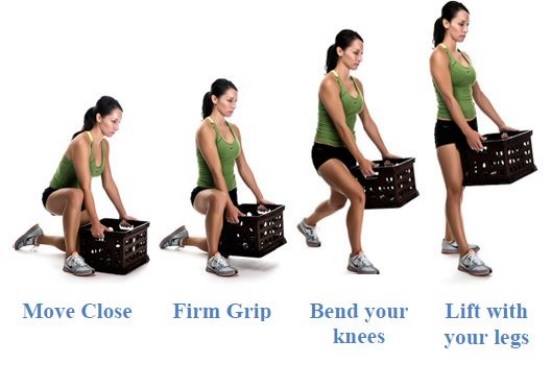
Source: http://www.thesafeness.com/manual-material-handling.php
Look at the diagram above.
Why does this method of lifting produce less strain on the musculoskeletal system than bending at the waist?
Question 9
|
Jenny was injured at work when using a portable hoist to transfer a client with a disability. The injury occurred because Jenny was not given any training in how to use the equipment. Jenny’s supervisor had told her to follow the instructions in the manual – Jenny couldn’t find the manual so she decided to figure it out herself. |
- Did the employer show a duty of care to Jenny? Explain your answer.
- Did Jenny fulfill her duty of care? Explain your answer.
- Jenny works in Victoria. She would like to find out more about her WHS responsibilities. What is the name of the WHS authority that Jenny should contact?
Question 10
In the table below, give a brief explanation of what each of the safety signs means
|
Sign |
Meaning |
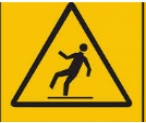
| |

| |
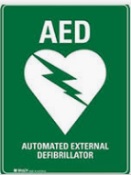
| |
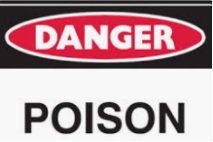
| |
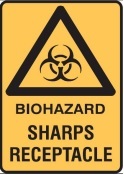
| |
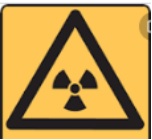
| |
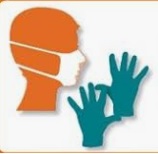
|
Question 11
- List four emergencies that will be covered by emergency procedures in the workplace?
- List three key pieces of information you should be familiar with that you can find in emergency procedures.


